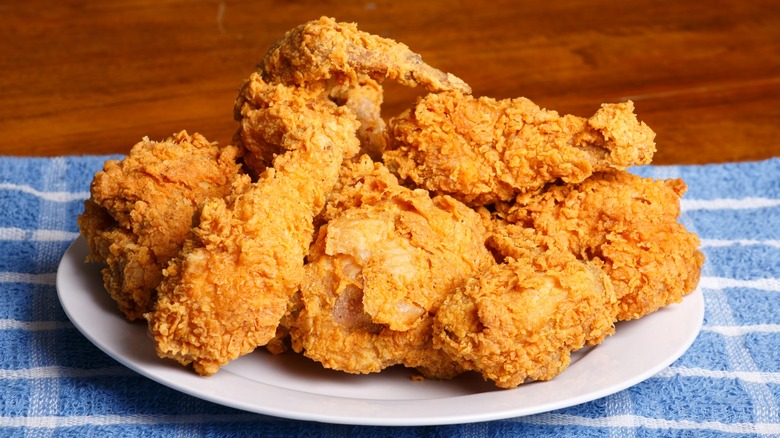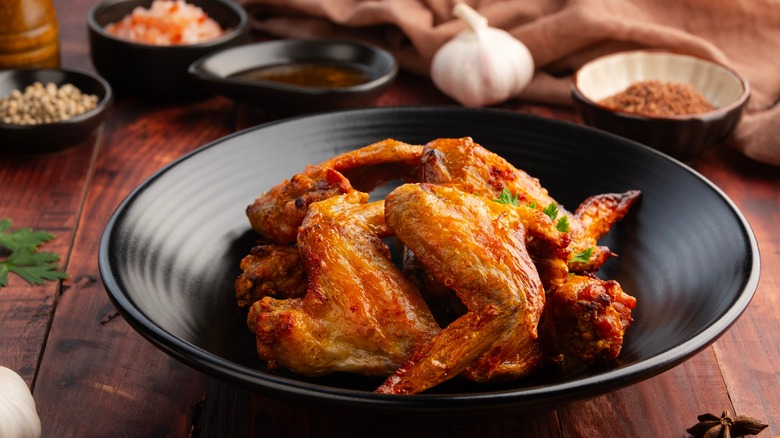For The Most Delicious Fried Chicken, Start With The Main Ingredient
Folks often love to boast about the techniques they use to achieve the juiciest, crispiest, most flavorful fried chicken around. Whether that means incorporating umami-enhancing ingredients or taking inspiration from their snack drawer, elevating the flavor and crunch all comes down to add-ins. Yet, seldom do people focus on the characteristics of the star of the dish –- the chicken itself. Not Reid Shilling, though. The executive chef and owner of Shilling Canning Company and Fancy Ranch Amish Fried Chicken told The Takeout, "I'd argue that sourcing the chicken is the most critical part of the process."
Getting hold of a quality bird is paramount because if you don't start with a good foundation, no amount of seasoning combinations will prevent fried chicken from falling flat. "At Shilling and Fancy Ranch, we buy our chickens from a small Amish co-op. They are never injected with hormones or antibiotics in their whole life cycle," Shilling said. "They are free range and vegetarian fed, which makes for a healthier and more flavorful bird."
But even healthy poultry can be tainted when not cooled correctly as it's prepared for sale. "The real key here is finding a chicken that is truly air chilled. What this means is that after the chicken is gutted, the processor has to get the internal temperature of the chicken to 40 degrees Fahrenheit or below as quickly as possible," Shilling said. When poultry has been cooled using an ice bath (more common), it becomes saturated with unwanted moisture. "Generally speaking, a water-chilled bird will have 8-12% water retention, which means the chicken holds onto water; which, of course, is the enemy of crispy skin and flavor."
Respect the bird for flavorful fried chicken
Shilling warns against purchasing a bird that was waterlogged from the start, but he did mention one crucial step. "You have to brine. It's the only way to season the chicken to the bone." Brining chicken adds a depth of flavor while simultaneously giving the poultry its best chance at attaining a crispy outer layer once fried. "It sounds counterproductive, but the salt seasons the meat and keeps the moisture in the meat rather than it leeching out and preventing crispy skin," Shilling explained. "The salt actually has a drying effect on the exterior of the chicken."
Only after brining should you start dredging. The liquid component that helps the flour stick to the poultry can be egg, but Shilling takes a different approach by using rich buttermilk. "Buttermilk helps to tenderize the meat, further the seasoning of the meat, and creates magic when combined with the dredge," he said.
As for the dry element, start with the best type of flour for fried chicken to prevent the outer layer from becoming gummy. Shilling explained all-purpose flour "is a good base to start with, but blending in alternative flours with lower gluten content can also manipulate the level of crispness, lightness, and body you can attain. Rice flour, corn meal, corn starch, even corn flakes are often stars in great fried chicken recipes."
Of course, all that work is for naught if you use a subpar oil to fry the chicken. "I prefer neutral oils here like canola or rice bran so that we aren't adding an additional component that would muddy the flavor profile," Shilling said.

